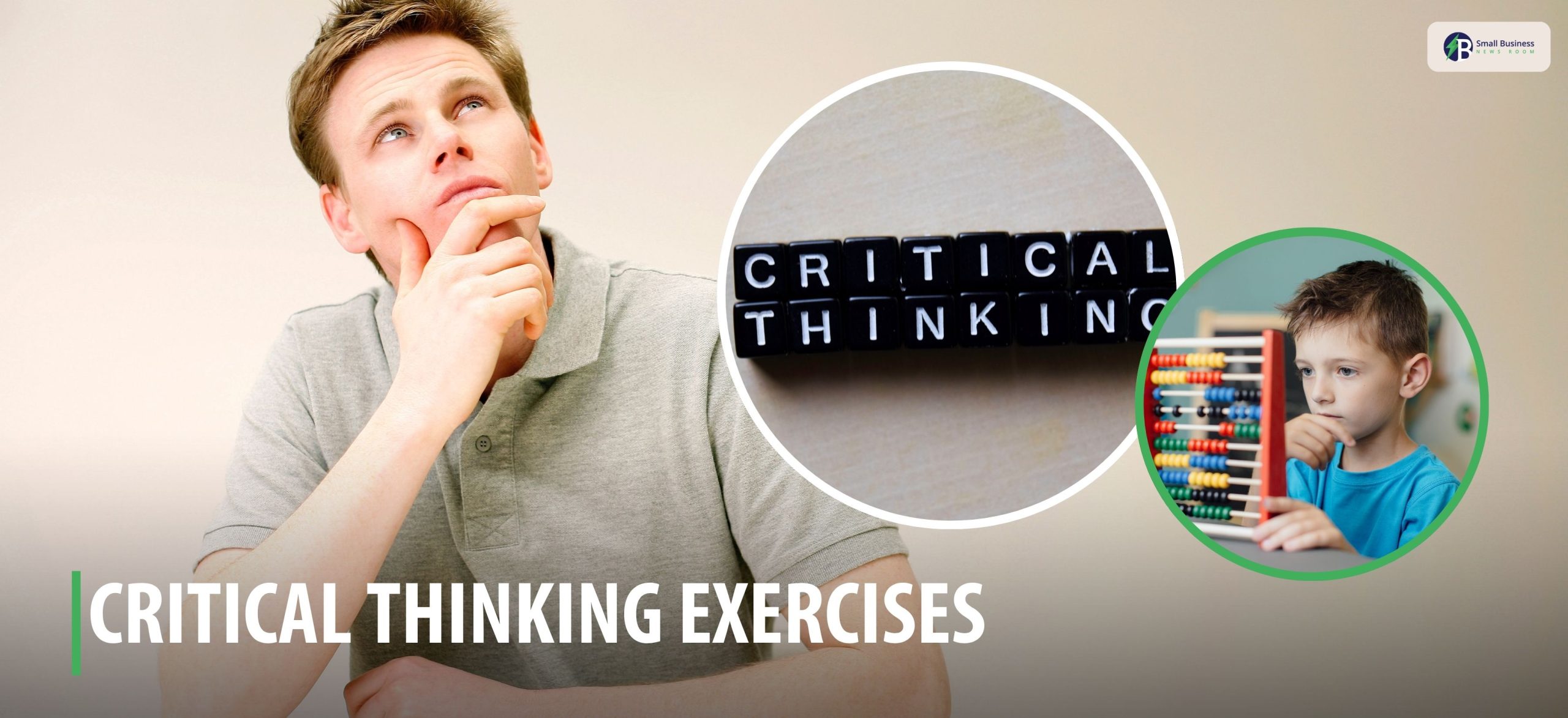Table Of Contents
- What Are The Theoretical Foundations & Frameworks Related To This?
- 1. The Paul–Elder Framework of Critical Thinking
- 2. Bloom's Taxonomy
- 3. Metacognitive Framework
- What Are The Levels Of Critical Thinking? From Beginner To Advanced!
- Core Exercises For Critical Thinking By Levels
- Foundational Exercises
- Intermediate Exercises
- Advanced Exercises
- The Integration Of Reflection And Metacognition
- What Are The Adaptation For Contexts And Modes?
- What Are The Measurements for Progress And Assessment?
- The Real Life Examples And Case Studies
- 1. Changing a Classroom
- 2. Corporate Strategy Session
- 3. The Controversy Surrounding Virtual Universities
- What Are The Major Challenges Related To Critical Thinking, And How Can We Overcome Them?
- How To Build A Long-Term Habit Along With A Roadmap?
How Do Critical Thinking Exercises Sharpen Your Mind?
Each day, we make countless decisions about what to believe, how to respond, and what to focus on.
But do we ever take time to consider how good our own thinking is? In an era of abundant information and constant distraction, the ability to think thoughtfully is remarkable.
It makes us stop, reflect, and respond thoughtfully instead of reacting quickly.
Critical thought is not skepticsm; it is the practice of questioning, analyzing, and evaluating our own thoughts as well as our world.
Always remember one thing: there is no standard list of critical thinking exercises. It is meant to propel you from novice to advanced thinking.
It includes exercises for self-introspection, applications to life situations, and even methods for tracking your progress.
In this blog, I am going to include the critical thinking exercises that can help you with critical thinking and further help you focus your mind.
I will further provide a brief research support on practice-based Paul & Elder, Bloom’s Taxonomy, and metacognitive models.
What Are The Theoretical Foundations & Frameworks Related To This?
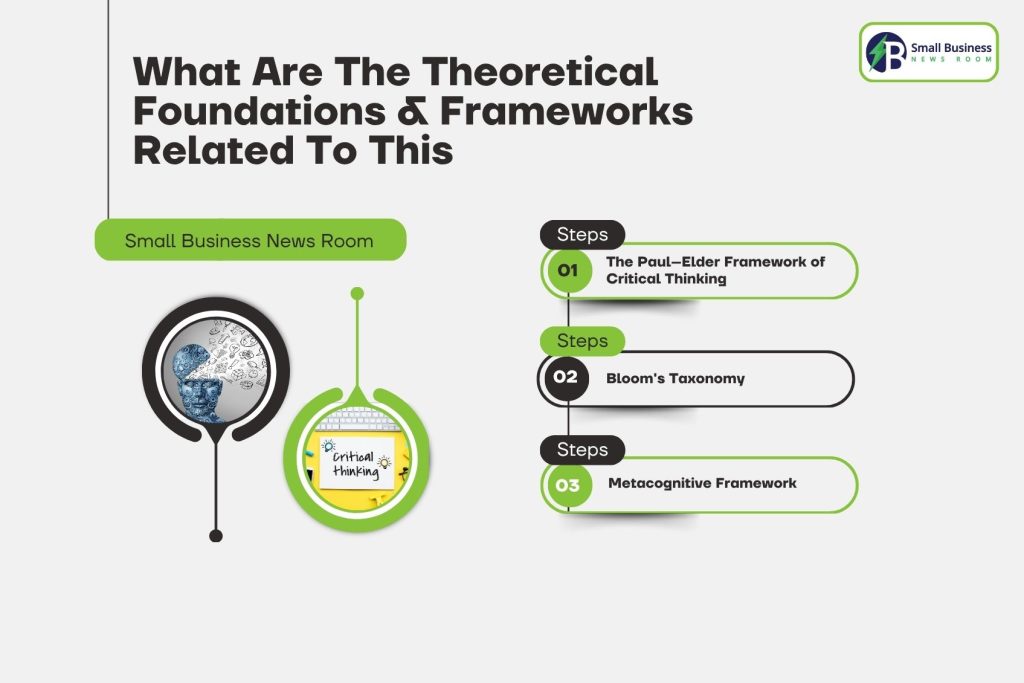
1. The Paul–Elder Framework of Critical Thinking
According to Paul and Elder (2001), reasoning is the core of everything we do, and all activities have elements. Those elements are:
- Purposes,
- Assumptions,
- Implications.
Those elements are controlled by the criteria of thought, like, for instance, truth, clearness, and justice. Their method consists of continually examining one’s thoughts by applying these criteria separately and on their own.
When you are doing a thinking exercise, you are not simply solving a puzzle – you are, in fact, bringing to bear the concepts of clarity, logic, and understanding others’ perspectives.
2. Bloom’s Taxonomy
Bloom’s Taxonomy discloses the hierarchy of six cognitive skills:
- Remember,
- Understand,
- Apply,
- Analyze,
- Evaluate,
- Create.
Higher up the hierarchy, the tasks become progressively more difficult and require more understanding and creativity.
3. Metacognitive Framework
Metacognition, or metacognition, is one topic for thought, fostering self-questioning and reflection. It makes sure that no exercise is just another chore.
This is a mirror of your mentality that helps to evaluate your mental approach rather than your mental content.
These three models constitute the basis for the following exercises. They allow you to make the gradual transition from simple awareness to conducting sophisticated exercises and skills of critical thinking.
What Are The Levels Of Critical Thinking? From Beginner To Advanced!
In attempting to develop a keener mind, think of growth as a staircase. It is impossible to discuss involved issues without knowing beforehand how to differentiate fact from opinion.
| Foundational | Intermediate | Advanced |
|---|---|---|
| Be mindful of observation, comprehension, and differentiating evidence from assumptions. | Engage in questioning, argument analysis, and perspective evaluation. | Promote systems thinking: connecting multiple causes, reasoning with abstractions, and conceptualizing solutions for ill-structured difficulties. |
Core Exercises For Critical Thinking By Levels
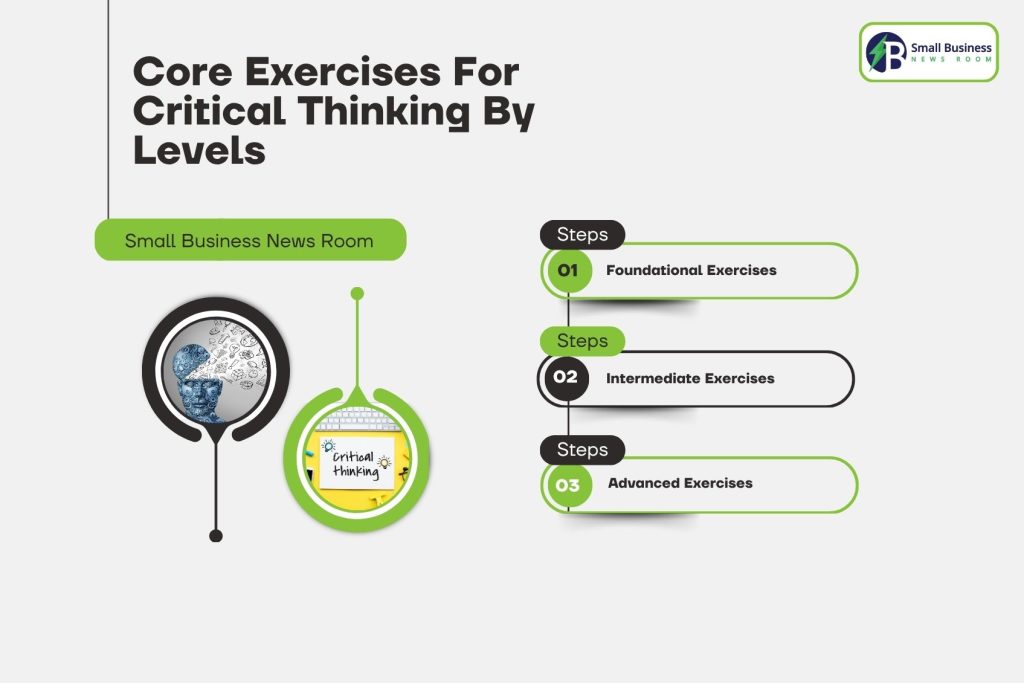
The core critical thinking exercises can be grouped into three specific levels!
- Beginners
- Intermediate
- Advanced
At each level, the difficulty increases from basic concepts to applying complex analytical frameworks.
The progression involves moving from simple questioning and fact analysis to evaluating arguments and creating innovative solutions.
Foundational Exercises
Fact and Opinion Analysis
- Task: Learn to differentiate evidence from interpretation.
- What can you do: Take a news article or an opinion piece. Underline statements that offer facts that can be checked, and mark opinion/guess phrases.
- Reflective Question: “Which parts were actually supported by the evidence?”
Logical Fallacy Scavenger
- Task: Find the errors in the argument.
- How: Get the video of the debate or the ad. Detect one sentence that makes use of emotional appeal (pathos), false cause, or hasty generalization.
- Good for: People who regularly watch/listen to the news or read it.Approximately: 10–15 minutes.
Question Storming
- Objective: To value questions rather than quick answers.
- How to do: Instead of coming to an immediate decision, spend 10 minutes writing down all possible questions you can think of regarding the matter.
- Reason: It opens the mind for different thoughts and increases the desire to know more.
Puzzle games and brain games
- Purpose: To develop abstract thinking.
- Advice: Select puzzles that require thinking rather than memory.
- Evaluate your approach later: “Did I make a conclusion too soon?”
Intermediate Exercises
Socratic Dialogue
- Goal: Improve thinking through questioning. How: Working in pairs or groups, take an accepted idea (e.g., “Technology makes us smarter”) and examine it by repeatedly asking ‘why’ and ‘how’ questions.
- Reflective Question: “At what point did I decide to change my opinion?”
Case Study Response
- Goal: Develop critical thinking skills in daily life.
- Example: Analyze a corporate ethics dilemma. Identify the people affected, the assumptions made, and the likely outcomes. Upgrade learning with more local historical cases.
Role Reversal / Devil’s Advocate
- Goal: Demonstrate open-mindedness and empathy.Mode: Choose a controversial point of view that you disagree with and logically support it.
- Tip: Helps the user to become more aware of different perspectives and less biased.
Concept Mapping & Counter-Maps
- Goal: Realize the connectedness of different ideas.
- Tip: Construct a concept map, then produce another version of it, called a “counter-map,” that shows the oppositional ideas.
Advanced Exercises
Discussion with Proof and Response
- Task: Combine research with reasoning.
- Method: Present a point of view supported by statistics and then anticipate counterarguments.
- Used: Graduate seminars, policy analysts, and team leaders.
Orphan Problem Designing
- Objective: Respond to highly complex questions without any prior answer (e.g., “Complementary rather than substitute for human creativity: How can AI?”).
- Reason: Develops creativity, resilience, and deep synthesis.
Systems Thinking and Root Cause Analysis
- Objective: Find connections and causes of things.
- Example: Understand a work issue (e.g., low morale) by going beyond the symptoms through policies, communication, and leadership patterns.
Wicked Problems
- Objective: Address real, open-ended issues (e.g., climate change).
- Result: It develops the person’s ability to be flexible and to think in a more advanced way instead of giving binary solutions.
The Integration Of Reflection And Metacognition

Critical thinking exercises only help your mind when you think about them afterward. Here’s how to add self-awareness to your routine:
Journaling Questions, after each session, ask:
- “What beliefs did I have?”
- “What perspectives did I miss?”
- “How sure am I of my conclusion, and why?”
- Self-Question Sets: Ask yourself questions regularly, like:
- “What’s obscuring my mind today?”
- “If I reverse roles, would my argument still be valid?”
You can also opt for Peer Debrief Protocols. You just need to provide commentary on clarity, analysis depth, and reasoning quality after each exercise, rather than focusing on agreement.
What Are The Adaptation For Contexts And Modes?
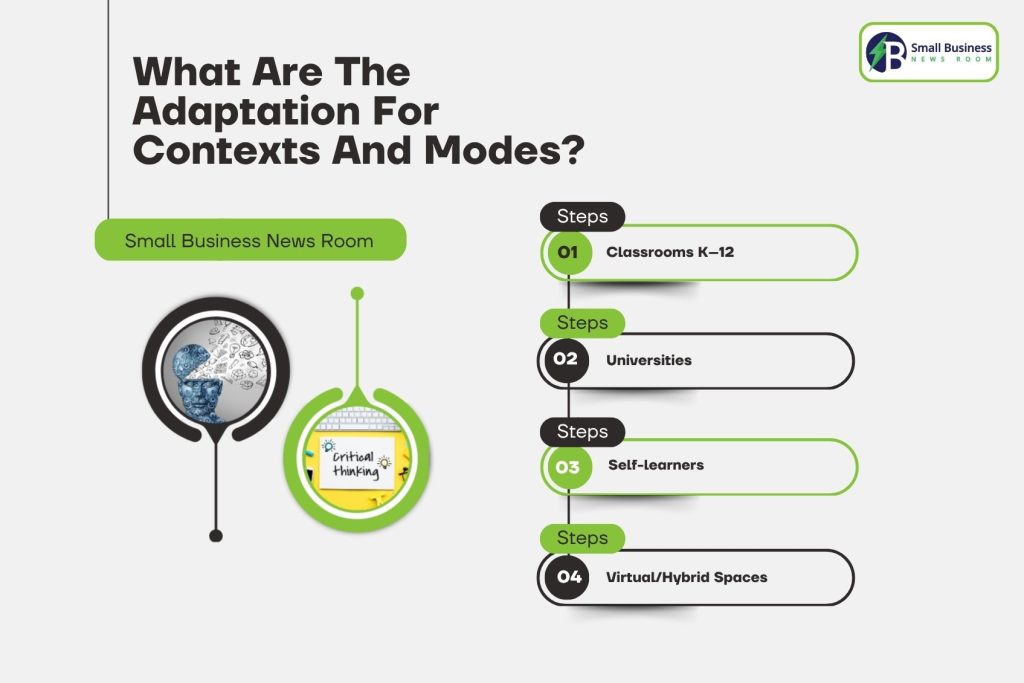
You can develop critical thought in various learning settings using methods and tools that are suitable for the learner’s level, situation, and means of interaction.
The next few examples describe in detail how this flexibility works:
- Classrooms K–12: Begin with simple exercises such as sorting facts from opinions, class discussions, or creating visual maps. These exercises help children differentiate evidence from belief while engaging them in a light-hearted manner.
- Universities: Employ techniques such as Socratic dialogue and case studies to enable students to think, talk, and reason. Discussion journals and peer groups also enhance the ability to reflect on thoughts.
Employ role plays, group discussion, and simulations to facilitate joint problem-solving under pressure, along with complex decision-making.
- Self-learners: Write daily in a journal, try logic puzzles, or blog to track fluctuating thought patterns and test personal biases.
- Virtual/Hybrid Spaces: Use digital whiteboards like Miro or Jamboard, breakout rooms, and team games to ensure that feedback, creativity, and communal thought are part of remote education.
It is always thus that consistency and systematic thought make practice a lasting intellectual gain.
What Are The Measurements for Progress And Assessment?
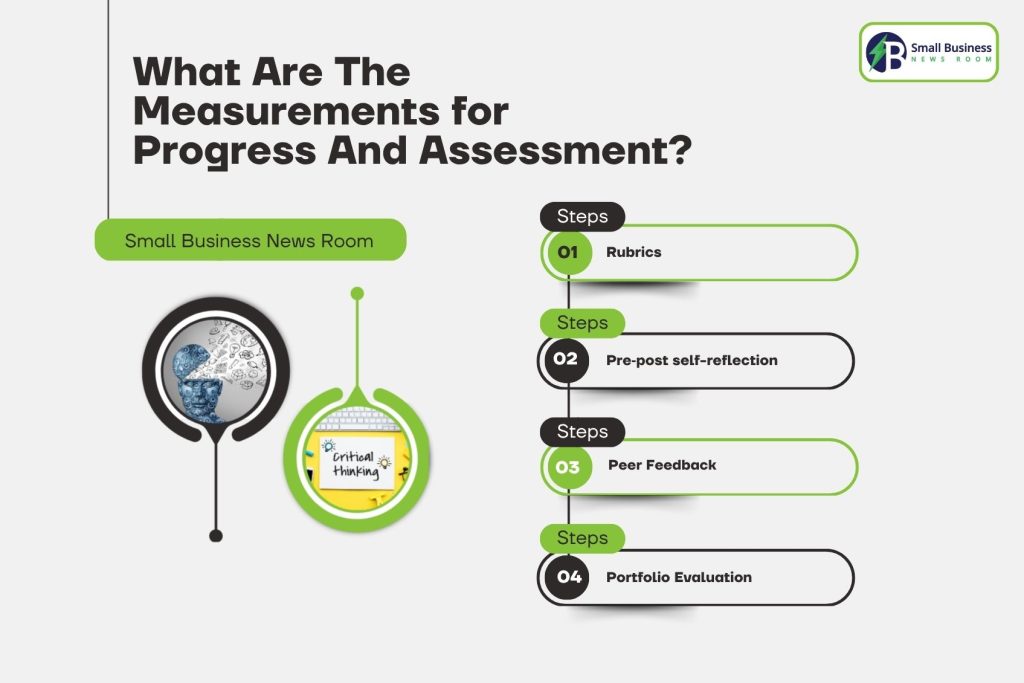
It is hard to become better at critical thought without seeing your progress along the way. Ongoing assessment converts nebulous improvement to specific, measurable progress. Here is how to do it effectively:
Rubrics: Apply structured rubrics such as the VALUE or Paul-Elder rubric to evaluate significant aspects such as clarity, logic, creativity, depth, and fairness. They give valuable feedback on your ability to grasp and think through complex issues.
Pre‑post self-reflection: Ahead of you starting an exercise cycle, brainstorm your answers to a tough question on paper.
A month later, review your answers again. This will demonstrate changes in your thoughts, beliefs, and usage of information.
Peer Feedback: Ask colleagues or your peers to assess your argument framework, evidence utilization, and clarity of communication. Objective views facilitate accountability as well as thought flexibility.
Portfolio Evaluation: Collect journal entries, maps of exercises, and exercise results. Portfolios indicate long-term development and can be used to identify recurring thought patterns or gaps in logic.
Along with these landmarks is a movement from reactive habit to deliberate, reflective analysis.
The Real Life Examples And Case Studies

1. Changing a Classroom
A high school teacher in Louisville used Question Storming daily for two weeks. Students began crafting multi-layered critical thinking questions instead of giving one-word answers. The class’s engagement and essay quality improved dramatically.
2. Corporate Strategy Session
A logistics company suffered from recurring schedule issues. Through root cause analysis, they did not uncover a lack of workforce, but vague shift communication. The installation of a simple template rectified it, earning them hours weekly.
3. The Controversy Surrounding Virtual Universities
A virtual class can use Socratic questioning on Zoom to discuss AI ethics. The students said that they have been able to feel more empathy after listening to their classmates’ opinions.
Both of these demonstrate how the structured events can lead to definite refinement in thought processes and cooperation.
Both demonstrate how structured events lead to definite refinement in thought processes and cooperation.
What Are The Major Challenges Related To Critical Thinking, And How Can We Overcome Them?
Critical thinking often involves major challenges. Overcoming these barriers would require you to deliberate on strategies, such as
- Self-awareness,
- Active questioning
- Seeking diverse perspectives.
This allows you to make more objective judgements. Here are the common challenges one might face!
- Resistance or Doubt: Some students view exercises as theoretical. Apply current events, news, or dilemmas to illustrate influence.
- Cognitive Biases: Everyone possesses latent assumptions. Role-reversing and counter-mapping are exercises in uncovering blind spots.
- Time Constraints: Even 10 minutes of structured questioning strengthens reasoning muscles.
- Shallow Participation: Start with critical thinking questions like “Why is this important?” and “Do you have evidence?”
Being consistent and making small, gradual efforts is far better than exerting oneself occasionally.
How To Build A Long-Term Habit Along With A Roadmap?
Critical thinking, as a sharpening of your mind, is like exercising your brain; it is used regularly. First comes the micro-daily exercises. You have to separate one article into facts from your own opinions.
Secondly, you can do a weekly reflection. Choose one of your weekly choices. Write your thought process, alternatives you considered, and final decision.
Growth Mindset can help you to consider every error in reasoning as a form of feedback. Self-correcting is critical intelligence’s hallmark.
You can consider joining the communities. These are the groups or forums that have organized discussions or activities to solve problems.
With practice over time, the overall impact is deep. Your thinking becomes more adaptable, evidence-led, and robust.






